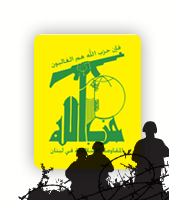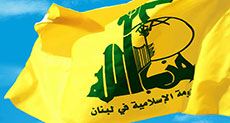
Islamic-Resistance Operations--1998

The Year 1998, like the preceding years of the Resistance's struggle, has been of significant reminiscence with respect to the nation. The ongoing events and the victories of the Resistance fighters have formed a new stage of liberating the occupied lands. Indeed, the year 1998 has excellently been the resistance year; the fighters' accomplishments further overwhelmed the occupation forces, making them seriously consider withdrawing from Lebanon.
This year, the resistance squadrons performed 1519 military operations, 1163 among which were the Islamic Resistance's. The occupation sources acknowledged 24 "Israelis" were dead and 144 others wounded; 21 of who were killed and 123 wounded during the Islamic-Resistance operations. The enemy sources also said 31 settlers had been wounded when the Islamic Resistance bombarded the "Israeli" settlements. The sources claimed 3 "Israelis" were dead and 12 wounded in "different accidents". As to the Lahd army casualties resulting from the resistance operations, 34 were killed and 52 wounded; 30 among who were killed and 42 wounded during the Islamic-Resistance operations. The enemy also claimed a Lahd militiaman was killed and another wounded in "different accidents".
The fighters actually demolished 5 Merkava tanks and 8 military vehicles of the enemy and the Lahd agents.
In contrast, the resistance sources declared 26 "Israelis" and 35 Lahd militiamen were killed, also 144 "Israelis" and 55 Lahd militiamen wounded. The sources also stated 9 Merkava tanks and 42 military vehicles were demolished.
This year, 37 resistance fighters were martyred: 34 among who belonged to the Islamic Resistance, 2 to "the Amal Movement", 1 to "the Lebanese National Resistance Front (LNRF)", and 1 to "the Cyclone Organization" of "the Syrian Social Nationalist Party (SSNP)".
In fact, the resistance operations plagued the enemy soldiers. They were so petrified that they started acting wrongly; the enemy units even clashed with each other inside the occupied region. In reality, two forces of the Zionist "Golani Brigade" were patrolling near at-Taybeh Site when each of them thought the other was a resistance group. Hence, both forces opened fire on each other, bringing about many casualties before realizing they belonged to the same brigade. This incident, therefore, reflected the serious paranoia of the occupation soldiers, as well as the misconduct of the enemy command as to distributing military groups. Upon apprehension of the Islamic-Resistance fighters' surprise attacks, which the fighters had so far carried out well during their operations against the occupation forces, the enemy command had depended on intensifying the deployment of Zionist soldiers.
Islamic-Resistance Fighters Break into Sites
In 1998, the number and quality of the Islamic-Resistance operations were significant, especially when these operations were performed in spite of the occupation's military and security measures. This year, the fighters seized more sites, further overwhelming the enemy command and soldiers. Neither could they prevent the operations from developing, nor could they stop the fighters from infiltrating into the deep occupation sites in South Lebanon. Among several significant operations, there were:
- Breaking into Bir Kallab Site on February 27, 1998
- Breaking into Haddatha Site on July 2, 1998
- Daring attack against ar-Rihan Barracks on July 30, 1998
Another significant gain the Islamic Resistance made was making the enemy evacuate Toumet Niha Site in West Beqaa on September 16, 1998. The enemy had no choice but to do that after realizing it was impossible to limit the fighters' operations against the site. Now the towns of West Beqaa were safer.
Besides, the Lahd militiamen serving at the gate of Dhahr el-Mashnaqa Crossing Point in Sfaray-Kfarfalouse, in addition to those serving at a checkpoint in Khallet Annan-Jezzine, east of Kfarfalouse at the side of Roum, withdrew from their positions. Obviously they did so after they refused to serve at Anna Site upon their fear of the resistance operations.
Operations near Borders
The resistance operations, in particular the ones performed by the Islamic Resistance, were considerable since they targeted Zionist-Lahd patrols deep in the occupied region, by the Lebanese borders with occupied Palestine. This fact proved the fighters' remarkable ability to penetrate the Zionist security and military measures supported by the most recent means of hi-tech monitoring. Besides, the operations targeted the sites by the borders and accurately hit them, reflecting the fighters' skill at using their shells and missiles, which would warn the enemy from further assailing civilians. Remarkable as well were the fighters' daring confrontations with the enemy in the occupied region, in addition to the clashes with the enemy units attempting to sneak into the liberated lands and commit more crimes against civilians:
- Blast on Ain Ebel Route on January 8, 1998
- Confrontations near Sojod Site on the 16th and 23rd of January 1998
- Confrontations near Blat Site on February 7, 1998
- Bombarding the sites by the borders: Ramieh, al-Abbad, and al-Manara on May 11, 1998
- Markaba Ambush on May 28, 1998
- First Operation Hasbaya on October 5, 1998; Second Operation Hasbaya on October 9, 1998
- First Operation Markaba on November 16, 1998; Second Operation Markaba on November 25, 1998
As for the second rocket counterstrike, it occurred on December 23, 1998 after "Israeli" warplanes shelled a house in Janta Town in Beqaa, martyring a whole family and reminding people of "Qana Massacre" (1996). The second counterstrike was violent; the rockets reached Zionist settlements deep in the north of occupied Palestine.
Agents Targeted
The Lahd senior agents, too, were struck by the Islamic Resistance; the fighters blasted the convoys of security and military Lahd officers. Among the most significant operations was blasting the convoy of head of "Battalion 20" on September 9, 1998, though he escaped death. Another significant operation was blasting the convoy of the security chief of Jezzine, agent Joseph Karam, nicknamed "Alloush". Performed on October 10, 1998, the operation killed 4 of Karam's escorts and wounded another. Karam escaped death, though. The Islamic Resistance also killed several other agents in different operations.
Source: moqawama.org
Comments

DIARY OF RESISTANCE OPERATIONS -DECEMBER 199
12 years ago
DIARY OF RESISTANCE OPERATIONS -November 1998
12 years ago
